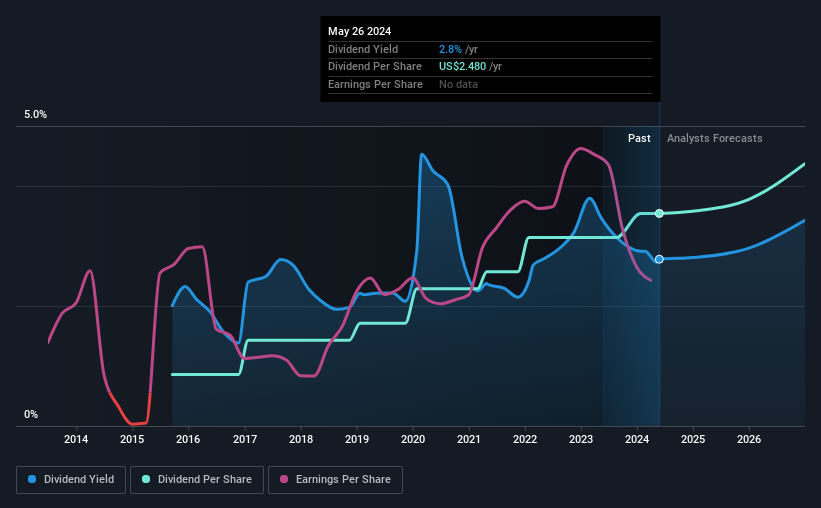Popular, Inc. (NASDAQ:BPOP) Looks Like A Good Stock, And It's Going Ex-Dividend Soon
Popular, Inc. (NASDAQ:BPOP) is about to trade ex-dividend in the next 3 days. The ex-dividend date is one business day before a company's record date, which is the date on which the company determines which shareholders are entitled to receive a dividend. The ex-dividend date is important because any transaction on a stock needs to have been settled before the record date in order to be eligible for a dividend. This means that investors who purchase Popular's shares on or after the 30th of May will not receive the dividend, which will be paid on the 1st of July.
The company's upcoming dividend is US$0.62 a share, following on from the last 12 months, when the company distributed a total of US$2.48 per share to shareholders. Calculating the last year's worth of payments shows that Popular has a trailing yield of 2.8% on the current share price of US$89.22. If you buy this business for its dividend, you should have an idea of whether Popular's dividend is reliable and sustainable. We need to see whether the dividend is covered by earnings and if it's growing.
View our latest analysis for Popular
If a company pays out more in dividends than it earned, then the dividend might become unsustainable - hardly an ideal situation. Popular paid out a comfortable 35% of its profit last year.
When a company paid out less in dividends than it earned in profit, this generally suggests its dividend is affordable. The lower the % of its profit that it pays out, the greater the margin of safety for the dividend if the business enters a downturn.
Click here to see the company's payout ratio, plus analyst estimates of its future dividends.
Have Earnings And Dividends Been Growing?
Stocks with flat earnings can still be attractive dividend payers, but it is important to be more conservative with your approach and demand a greater margin for safety when it comes to dividend sustainability. If earnings decline and the company is forced to cut its dividend, investors could watch the value of their investment go up in smoke. That explains why we're not overly excited about Popular's flat earnings over the past five years. It's better than seeing them drop, certainly, but over the long term, all of the best dividend stocks are able to meaningfully grow their earnings per share.
Many investors will assess a company's dividend performance by evaluating how much the dividend payments have changed over time. Popular has delivered an average of 17% per year annual increase in its dividend, based on the past nine years of dividend payments.
The Bottom Line
From a dividend perspective, should investors buy or avoid Popular? Earnings per share have been flat in recent years, although Popular reinvests more than half its earnings in the business, which could suggest there are some growth projects that have not yet reached fruition. Overall, Popular looks like a promising dividend stock in this analysis, and we think it would be worth investigating further.
With that in mind, a critical part of thorough stock research is being aware of any risks that stock currently faces. Every company has risks, and we've spotted 3 warning signs for Popular you should know about.
A common investing mistake is buying the first interesting stock you see. Here you can find a full list of high-yield dividend stocks.
Have feedback on this article? Concerned about the content? Get in touch with us directly. Alternatively, email editorial-team (at) simplywallst.com.
This article by Simply Wall St is general in nature. We provide commentary based on historical data and analyst forecasts only using an unbiased methodology and our articles are not intended to be financial advice. It does not constitute a recommendation to buy or sell any stock, and does not take account of your objectives, or your financial situation. We aim to bring you long-term focused analysis driven by fundamental data. Note that our analysis may not factor in the latest price-sensitive company announcements or qualitative material. Simply Wall St has no position in any stocks mentioned.

 Yahoo Finance
Yahoo Finance 
